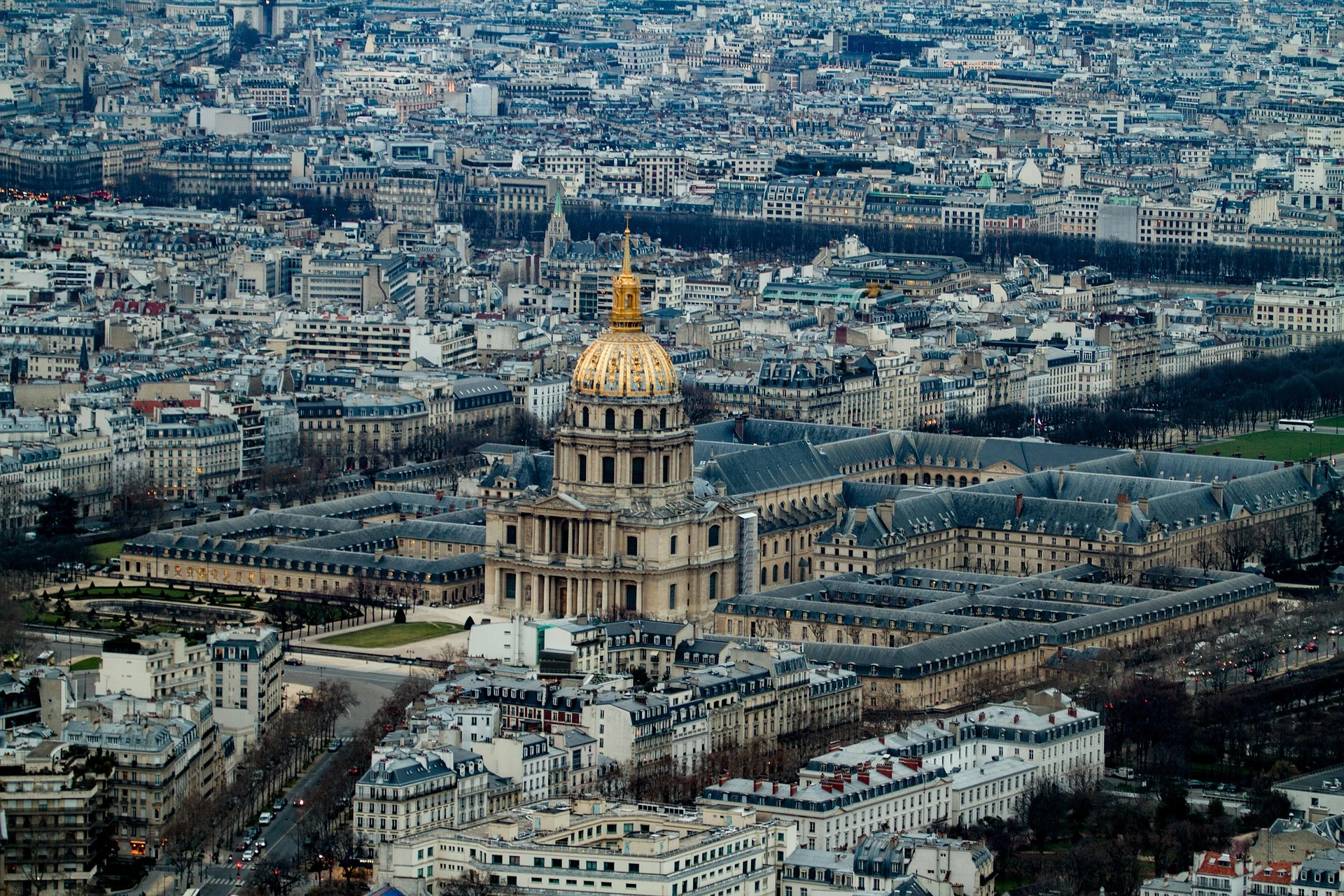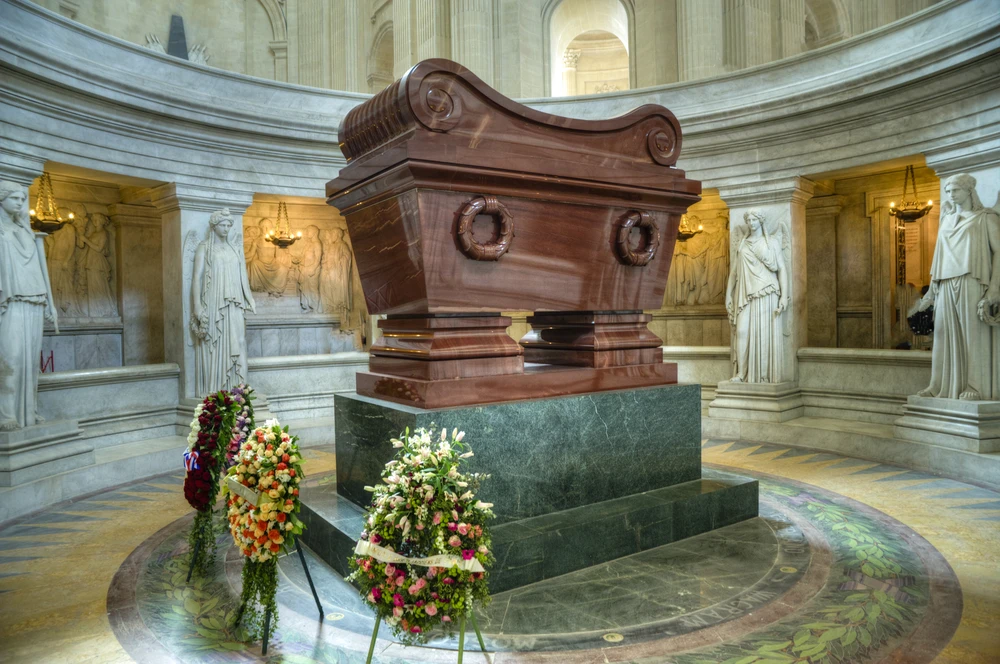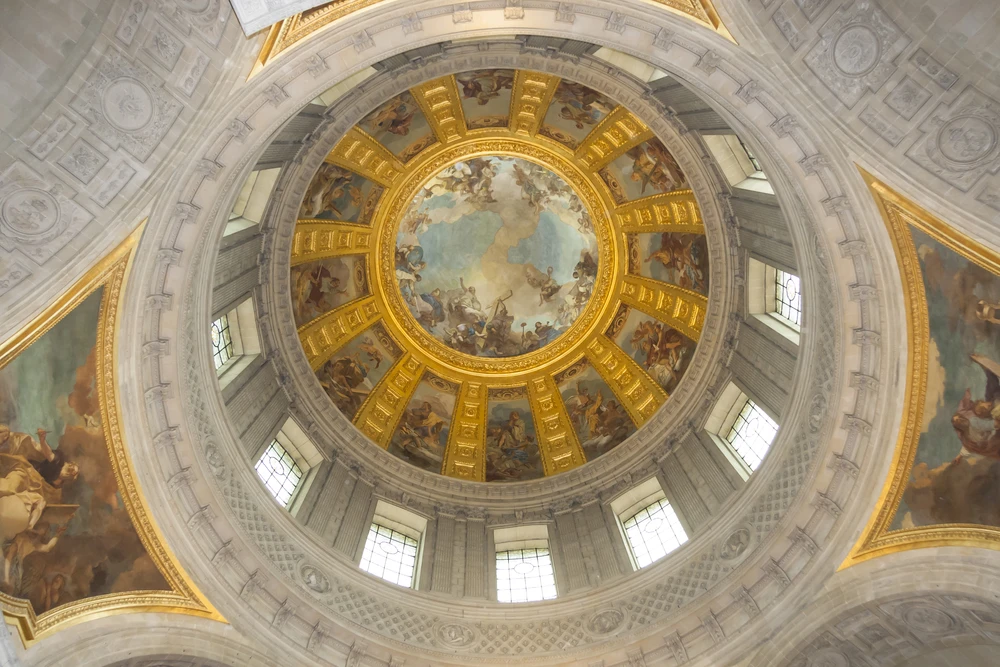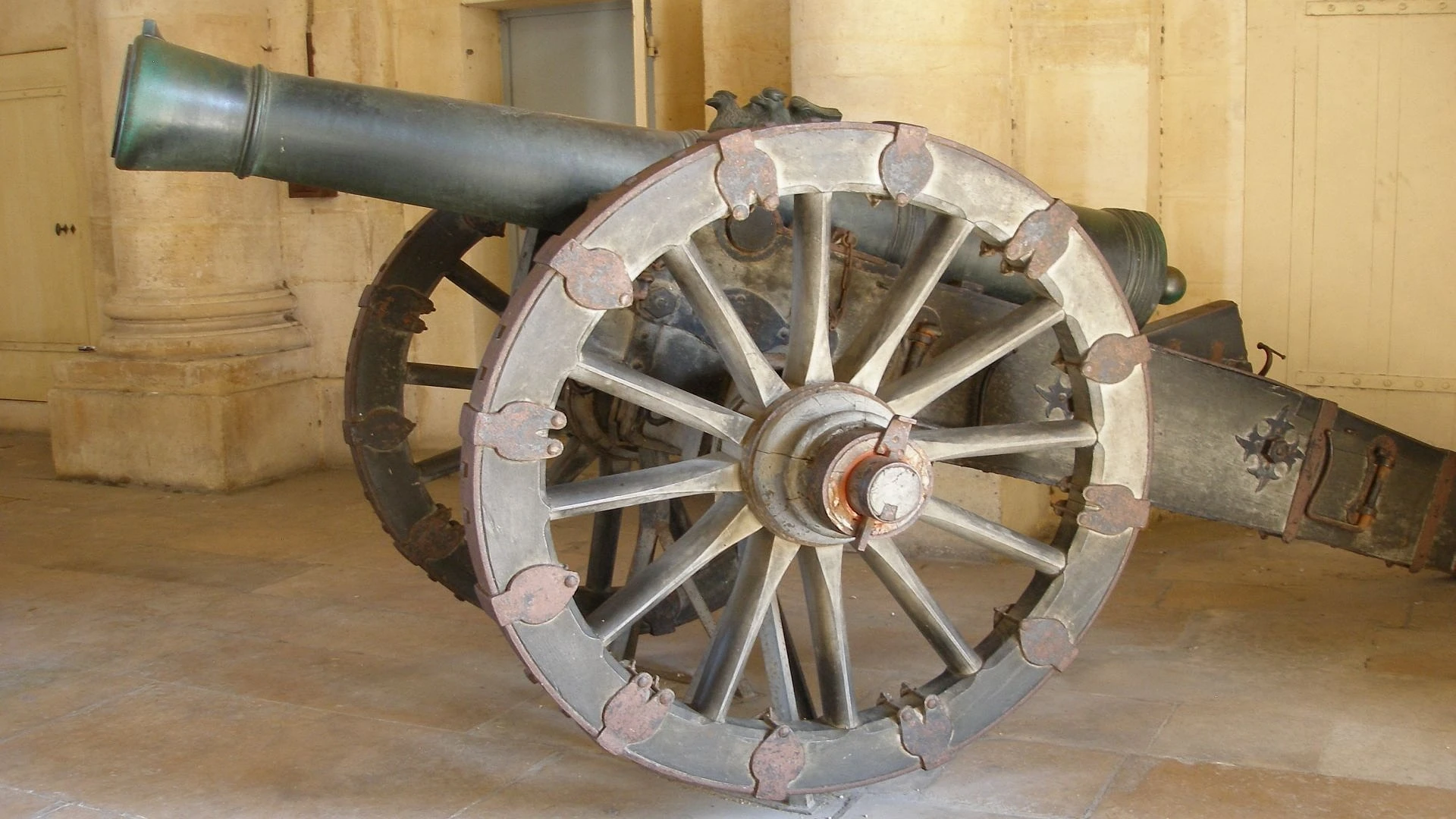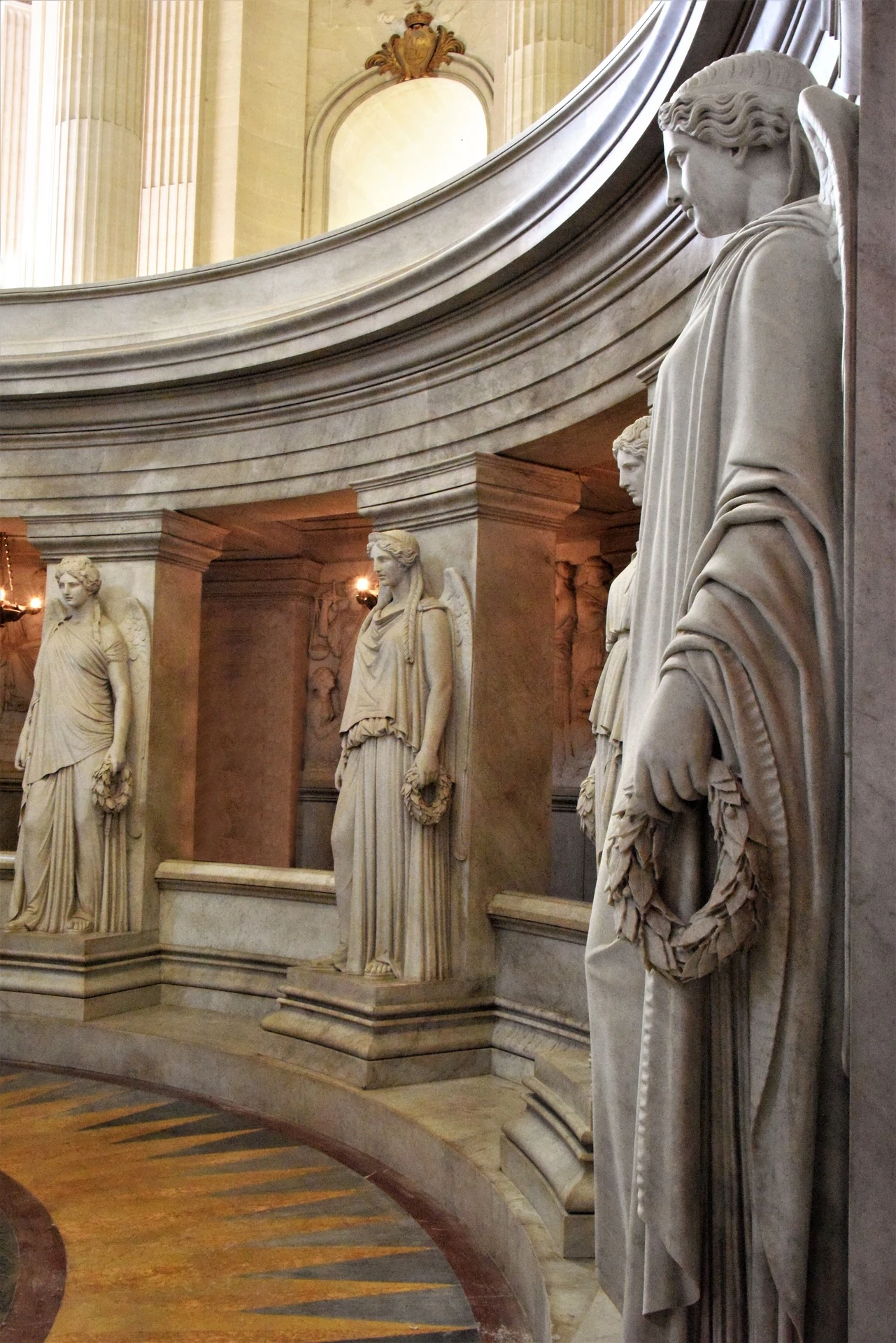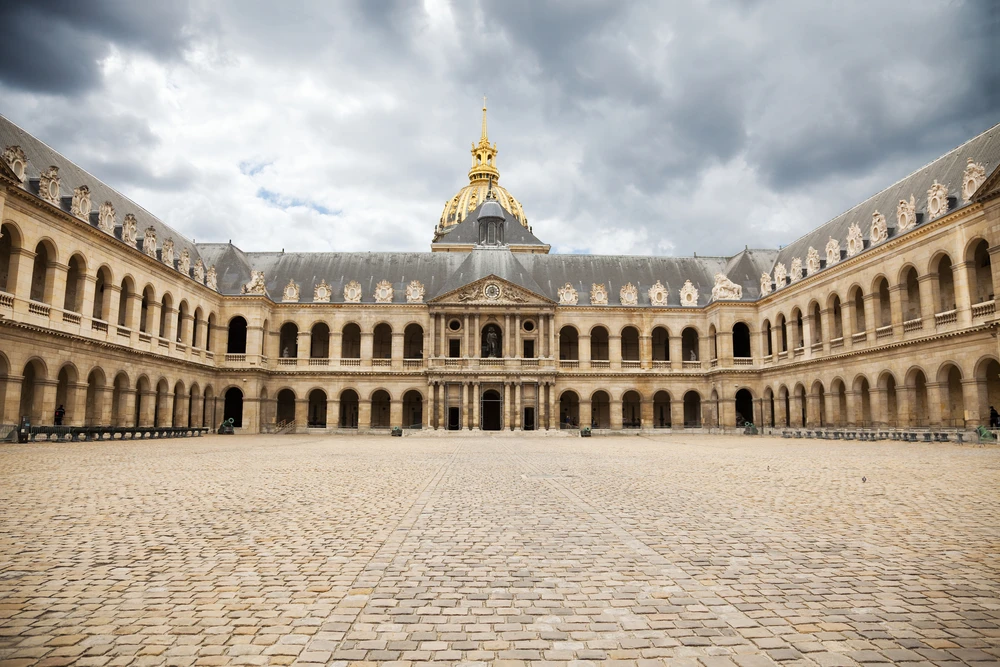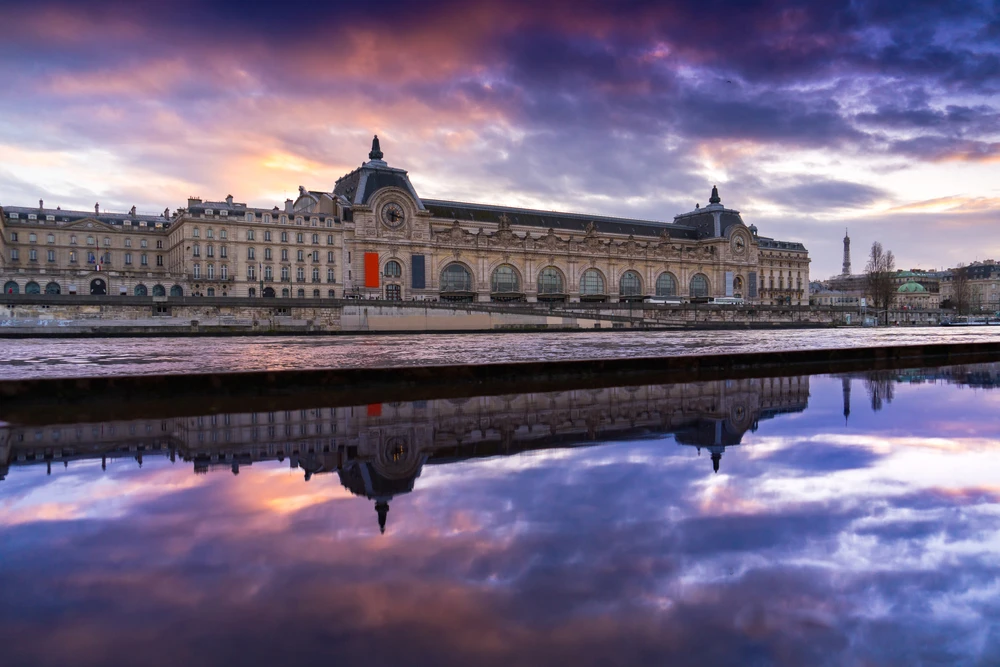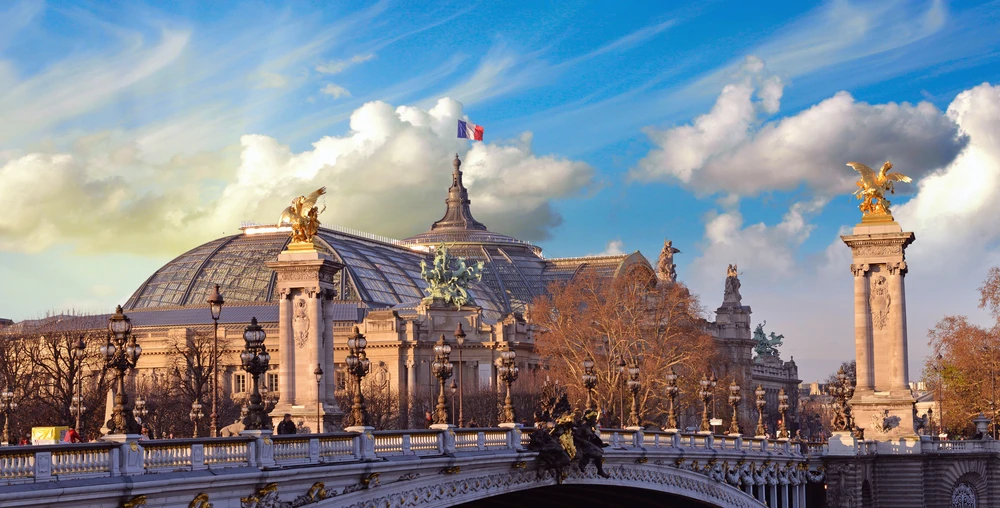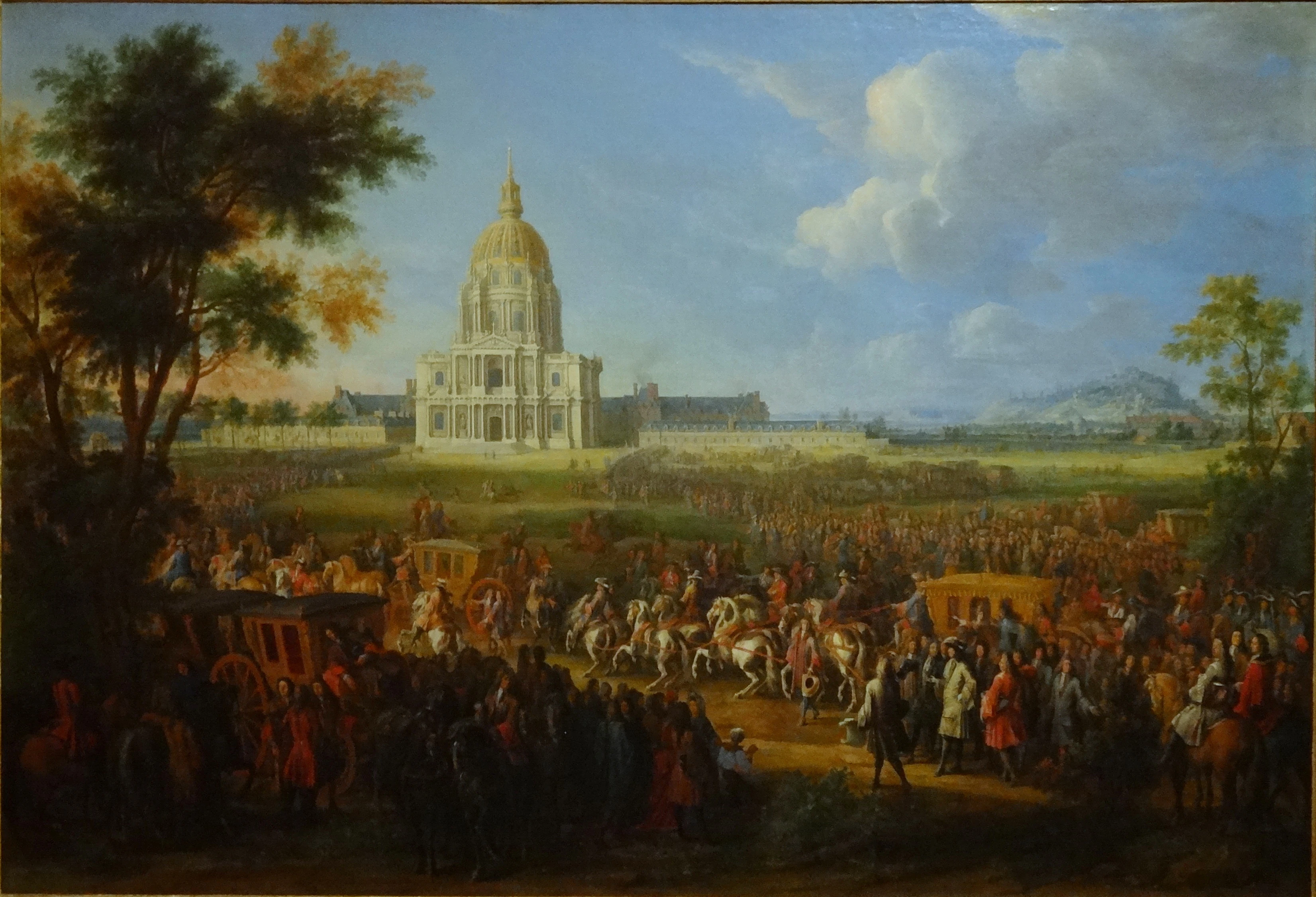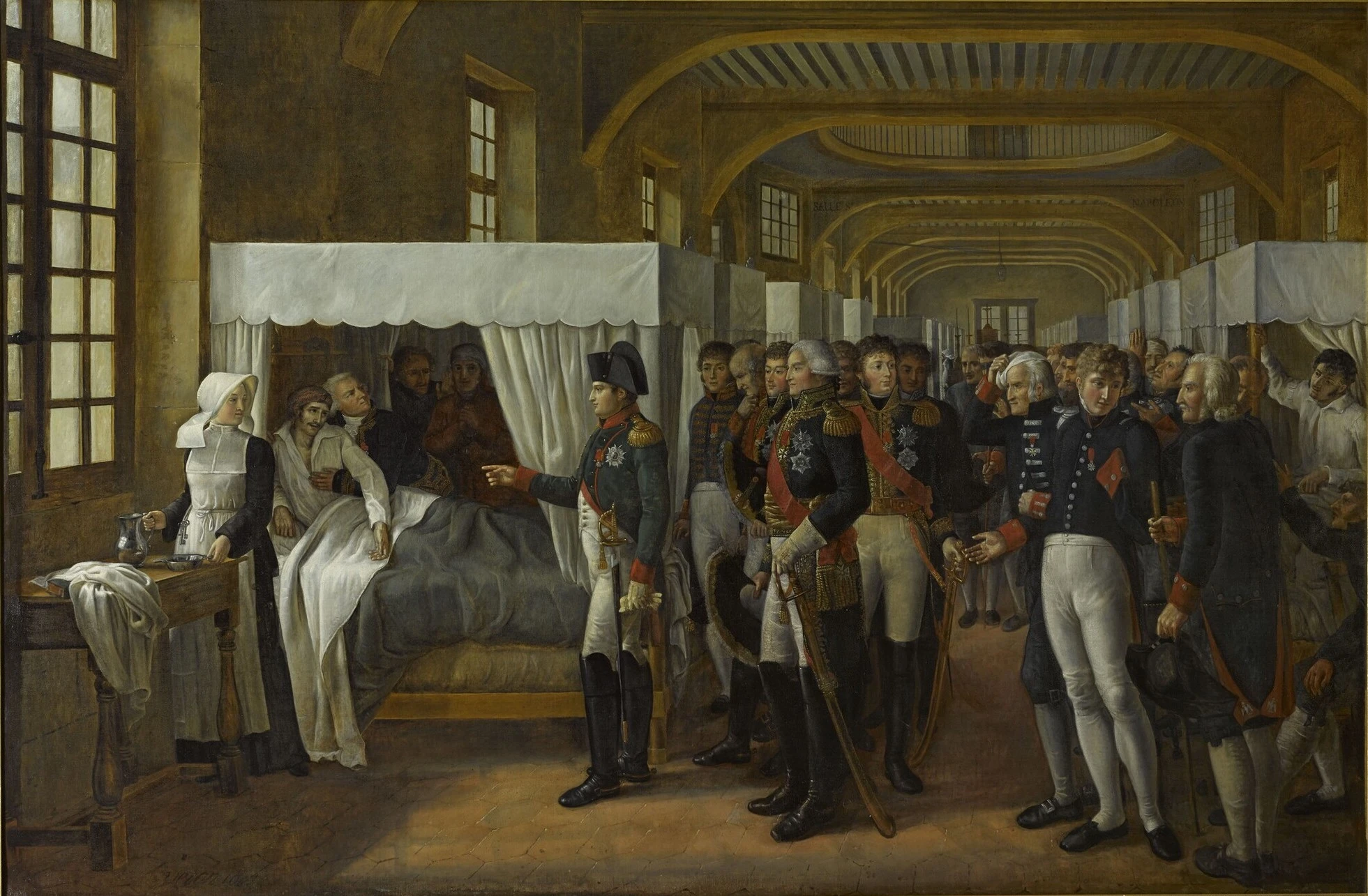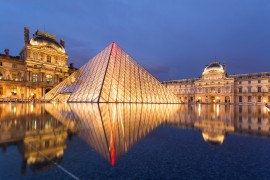Summary:
In this article, I will tell you about everything you absolutely must see at Les Invalides (Napoleon I’s tomb, the Dome, the Army Museum), what to explore around it in the 7th arrondissement, and the history of the site from Louis XIV to today. You will also find practical information for planning your visit (opening times, access, closure days) as well as a FAQ answering the most common visitor questions.
What to see at Les Invalides
Les invalides dans Paris / Photo chosen by Monsieur de France: by Rolf Dobberstein de Pixabay
The tomb of Napoleon I
It's hard not to start with him. Since 1840, Napoleon I has rested under the Dôme des Invalides. It took a decision by Louis-Philippe to repatriate the ashes from St. Helena, and the return was a veritable national celebration. The huge procession crossed Paris and solemnly entered Les Invalides. Since that day, the Dome has become a sanctuary. We descend into the circular crypt and discover the sarcophagus in red quartzite from Finland, set on a socle in green granite from the Vosges. Everything is designed to impress: twelve colossal statues, allegories of victories, surround the Emperor, as if to recall his extraordinary destiny. Here, we understand why Napoleon still fascinates. But the Dome is not just for the Emperor. The King of Rome, his son, is buried there in a precious urn. Marshal Foch, architect of the 1918 victory, and Marshal Lyautey also rest under these vaults. This is a military pantheon where France pays tribute to its greatest soldiers.
Napoleon's tomb at Les Invalides/ photo by Robert Crum/Shutterstock.com
The Dôme des Invalides and the royal church
The invalids at sunrise from the Alexandre III bridge/ by Dennis van de Water/Shutterstock.com
Even without the tomb, the Dome would be enough to make Les Invalides a must-see monument. Built between 1679 and 1706 by Jules Hardouin-Mansart, it rises to 107 meters. Its dome, covered in gold leaf, catches the light and shines brightly in the sun. For a long time, it dominated the Paris skyline. Inside, everything is designed to dazzle: baroque frescoes, stately columns, skillfully orchestrated light effects. The Dome was the royal chapel of Louis XIV, who could attend mass there from a private tribune. It's a masterpiece of architecture and religious staging. Next door, the église Saint-Louis des Invalides is much simpler. It housed resident soldiers and still retains a meditative atmosphere. Floating from the ceiling are military flags taken from the enemy, silent witnesses to the glory and sacrifices of the French armies.
Le dôme des invalides interior view/ photo by RistoH/Shutterstock.com
The Army Museum
A cannon from the Musée de l'Armée / Photo chosen by monsieur de France: by Jean-Paul Verpeaux from Pixabay
It's hard to imagine a more fitting location for a military museum. The Musée de l'Armée, founded in 1905, brings together over 500,000 exhibits. Here, we traverse a thousand years of the history of war, weaponry and memory. The tour begins in the Middle Ages. Full armor, gleaming helmets, forged swords, crossbows: it's like being in a chivalry novel. Then come the modern wars with seventeenth-century uniforms, bronze cannons, flintlock rifles. We sense the rise of the royal armies. The First Empire has its rightful place. Bicorns, marshals' coats, decorated weapons, regimental flags: everything recalls the Napoleonic legend. The display cases are brimming with objects that speak to history buffs and the curious alike. The twentieth century is undoubtedly the most moving part. For the First World War, we discover the uniforms of the poilus, Lebel rifles, trench objects, but also letters and photos. For the World War II, these are the uniforms of resistance fighters, the weapons of the Liberation of Paris, the documents on de Gaulle. The museum also includes a Charles de Gaulle memorial. Thanks to a multimedia tour, you can follow the General's life and actions, from June 18, 1940 to the presidency of the Republic. You leave the museum with a comprehensive, embodied understanding of French military history.
Around Napoleon's tomb/ Photo chosen by Monsieur de France : by Denis Doukhan from Pixabay
The main courtyard and ceremonies
The cour d'honneur is one of the finest classical ensembles in Paris. Lined with galleries, it was once used for military gatherings. Even today, it hosts solemn ceremonies. It's here that the Nation pays tribute to its heroes, at funerals or official tributes. There's also a superb collection of antique cannons lined up along the galleries. The Cour d'Honneur is both a showcase of classical architecture and a place where France's military heart still beats.
La cour d'honneur des Invalides/ photo by Ivan Soto Cobos/Shutterstock.com
What to see around Les Invalides
The Invalides esplanade
Impossible to miss this vast green space stretching out in front of the monumental facade. L'esplanade des Invalides is like a carpet linking the Dome to the Seine. People stroll here, rest here, sometimes picnic here. Parisians love this breathing space in the heart of an arrondissement dominated by ministries and embassies. The esplanade also has a history. Developed as early as the 18th century, it was long used for military parades and parades. Even today, it's not uncommon for open-air exhibitions or concerts to be held here. And the view it affords of the gilded dome remains one of the most beautiful vistas in Paris.
Saint-Louis des Invalides Church / photo par Mistervlad/Shutterstock.com
The Alexandre III Bridge
Just a stone's throw from the Invalides, you cross the Seine on what is undoubtedly the most beautiful bridge in Paris. The Pont Alexandre III, inaugurated in 1900 for the Universal Exhibition, is a masterpiece of elegance. With its monumental lampposts, gilded statues and delicately decorated arches, it symbolizes the Belle Époque. From its apron, the view of the Invalides dome is magnificent. At sunset, the Dome lights up and reflects its golds into the Seine. It's one of those places where Paris contemplates itself, where architecture and landscape blend gracefully.
Arc en ciel over the Alexandre III bridge and the Invalides in Paris / photo by RistoH/Shutterstock.com
The Grand Palais and the Petit Palais
Crossing the bridge, we come upon two spectacular buildings:the Grand Palais and the Petit Palais, also built for the 1900 Universal Exhibition. The Grand Palais, with its immense glass roof, is one of the capital's most prestigious exhibition venues. It's here that world-famous art exhibitions, salons and cultural events are held. Opposite, the Petit Palais captivates with its elegant facade and interior garden. It houses the Musée des Beaux-Arts de la Ville de Paris, with a free permanent collection and some very fine temporary exhibitions. Together with the Invalides, the Grand and Petit Palais form a triangle of art, history and architecture.
The 7th arrondissement district
The Musée d'Orsay in Paris / photo by Berny-1/Shutterstock.com
Around Les Invalides, the 7th arrondissement unfolds its charm. Calm avenues, Haussmann façades, Parisian cafés with lively terraces: the district offers a refined, elegant setting. You'll also come across official buildings, such as the Ministry of Defense and several embassies. A little further on, you can reach the Musée d'Orsay, housed in a former train station and home to one of the world's finest Impressionist collections. A visit to Les Invalides also means discovering a whole district of museums and promenades.
The Grand Palais / Image chosen by monsieurdefrance.com: Jovannig via dépositphotos.
History of the Invalides
Louis XIV's project
In 1670, Louis XIV decided to build an establishment for his wounded and invalid soldiers. It was a bold new idea: until then, former soldiers often ended up poor and abandoned. The Sun King wanted to offer them housing, care and dignity. Architect Liberal Bruant designed an immense quadrilateral of courtyards, dormitories and buildings. The complex could accommodate up to 4,000 boarders. The first invalids moved in as early as 1676. People lived there, worked in workshops and prayed in a church. Les Invalides was therefore at once a hospital, a retirement home and a barracks.
Building the Dome
A few years later, minister Louvois commissioned Jules Hardouin-Mansart to build a royal chapel. Between 1679 and 1706, he erected the Dôme des Invalides, one of France's most beautiful Baroque buildings. Its golden dome immediately became a landmark in the Parisian skyline. It's an architectural manifesto: grandeur of the king, splendor of the kingdom.
Louis XIV visiting the Invalides in 1706, painting by Pierre-Denis Martin.
Les Invalides and the Revolution
On July 14, 1789, the Invalides played a crucial role. That morning, rioters seized rifles and cannons from the arsenal. A few hours later, these weapons were used to take the Bastille. Les Invalides is thus forever linked to the French Revolution.
The return of Napoleon's ashes
In 1840, Louis-Philippe decided to bring Napoleon I's ashes back to Paris. The funeral procession crossed the capital to the cheers of the crowds. The tomb was installed under the Dome, transforming the Invalides into an imperial sanctuary. Since then, the site has attracted visitors every year, fascinated by the Napoleonic legend.
Napoleon Ier visiting the Invalides infirmary, February 11, 1808, image chosen by Monsieur de France: By Alexandre Veron-Bellecourt - Mona Lisa catalog: entry 000PE005062http://www.histoire-image.org/pleincadre/index.php?i=524, Domaine public, https://commons.wikimedia.org/w/index.php?curid=17530146
Les Invalides today
In the 20th century, Les Invalides hosted major national ceremonies. Funerals of statesmen, military tributes, commemorations: the site remains a mecca for remembrance. The Institution nationale des Invalides continues to welcome wounded servicemen, perpetuating the mission intended by Louis XIV.
Practical information for visiting Les Invalides
Opening hours for Les Invalides in Paris
The site is open every day from 10 a.m. to 6 p.m. Ticket offices close 30 minutes before closing time. This gives you plenty of time to enjoy the collections, temporary exhibitions, and the majestic Dome Church.
Special evening openings
On the first Friday of every month, the museum is open in the evening from 6pm to 10pm (last admission at 9pm). This is a unique opportunity to discover Les Invalides in a different, more intimate atmosphere.
Closing days
The site is closed only three days a year: January 1, May 1, and December 25.
Access to Les Invalides
- Main entrance: 129 rue de Grenelle, Paris 7th arrondissement.
- Place Vauban entrance: open from 2pm to 6pm.
Address: 129 rue de Grenelle, 75007 Paris or 2 place Vauban, 75007 Paris.
Metro: lines 8 and 13 (Invalides station) or line 8 (La Tour-Maubourg).
RER: line C (Invalides station).
Bus: 28, 69, 82, 87, 92, 63, 83, 93.
Opening hours: every day except January 1, May 1, and December 25.
Admission: ticket giving access to the Army Museum, the Dome, and Napoleon's tomb, with discounts for certain groups.
Parking: 23 rue de Constantine. Taxi rank at Place Vauban.
FAQ - Visiting the Invalides in Paris
What's there to see at Les Invalides?
The tomb of Napoleon I, the Dôme doré, the musée de l'Armée, the cour d'honneur and the église Saint-Louis.
How long does the tour take?
Please allow at least two to three hours to visit the museum, the Dome and the esplanade.
Are the Invalides still home to military personnel?
Yes. The Institution nationale des Invalides still takes in wounded servicemen, perpetuating the founding mission.
Are the Invalides free on certain days?
Yes, during Heritage Days and for certain audiences such as minors or European students.

